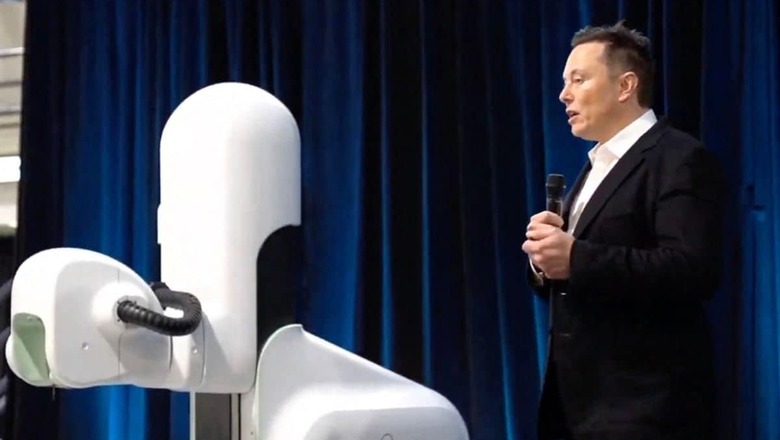
views
Elon Musk has said his Neuralink brain-chip startup had installed a brain implant in the first human patient on Sunday and is recovering well.
The first product from Neuralink would be called Telepathy, Musk said in a post on X (formerly Twitter). The initial results show promising neuron spike detection, he added.
The company’s aim is to connect human brains to computers and it wants to help tackle complex neurological conditions. Telepathy would enable “control of your phone or computer, and through them almost any device, just by thinking”, according to Musk.
What is Neuralink?
Neuralink is a neurotechnology company co-founded by Musk along with a team of scientists and engineers in 2016 to build direct communication channels between the brain and computers.
The aim is to supercharge human capabilities, treat neurological disorders like ALS or Parkinson’s, and ultimately achieve a symbiotic relationship between humans and artificial intelligence.
The technology is capable of recording and decoding neural signals and then transmitting information back to the brain using electrical stimulation.
Till last year, the California-based company had more than 400 employees and has raised at least $363 million.
Neuralink is also developing an app that would allow a person to manipulate a keyboard and mouse using only their mind.
How Neuralink’s Brain Implant Works?
Neuralink opened the study trial for recruitment last September. It won the approval from US regulators to test its brain implants in people.
The technology will mainly work through an implant called the “Link” — a device about the size of five stacked coins that is placed inside the human brain through invasive surgery. The device is designed to connect human brains directly to computers.
The hardware would harbor electrodes capable of both recording neural activity and stimulating specific regions of the brain.
As per reports, Neuralink’s underlying technology works in the same way as electrophysiology. The electrical chemical signals in the nervous system spark as neurons communicate with one another across gaps between nerve cells known as synapses, according to BuiltIn.
The brain activity is captured by electrodes or censors that detect voltages and measure the change in spikes when the voltages fire. Or in other words, our brain activity data is captured not only when we take action, but also if we think about taking action.
Researchers hope the implant’s powers will also treat paralysis, spinal cord injuries and brain disorders.
But Will Brain implants Actually Work?
Brain implants, which have long been imagined as a science fiction, has slowly evolved into practive with several companies apart from Neuralink introducing ways and means to connect our brains to computers.
Billions of dollars are flowing into a clutch of specialist companies hunting for treatments for some of the most debilitating ailments.
In 2014, for the first time in history, a paralysed person had regained the ability to move their arm using just their thoughts — with a little help from a device implanted in their brain after he agreed to be a part of an experimental trial of a brain-computer interface (BCI), which connects human neural activity to technology.
Last year, a paralyzed Swiss man, who lost the use of his arms after a fall, become the first person to test a new technology that reads his thoughts using AI and then transmits signals through his own nervous system to his arms, hands and fingers in order to restore movement.
The treatment, a combination of a brain-computer interface and a spinal implant, had previously allow a paraplegic patient to walk again, a breakthrough that was published in the scientific journal Nature in May.
(With inputs from agencies)

















Comments
0 comment